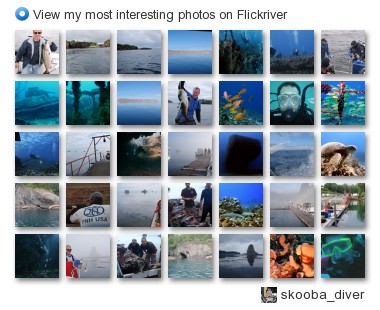
Hi Ken,
I'm going to be booking my excursions here sometime over the next week or
so, so if you have any suggestions on the best spot to go, please let me
know cause I don't want to miss out on a good dive opportunity. We're going
to Nassau Bahamas, St Thomas and St Maarten. Thanks a lot.
Hey Ryan,
Nassau has several good spots, one place I know that does a good job
is Stuart's Cove. They are the biggest shop; and are known for their
shark dives (a little controversial because they will feed sharks.
They can be a bit of a cattle-boat dive operation with up to 20 divers
on a boat. Contact info:
Stuart Cove's Dive Bahamas S-1875
Another choice is Nassau Scuba Center, they are more of a Mom and Pop shop with smaller groups. They also do the shark dives, but there have been reports that their rental gear is a little dated and worn out. If you don't mind the group size Stuart's is probably the better choice. In St. Thomas Blue Island Divers has a decent reputation. St. Thomas has a bunch of good wrecks, and many of them are in OW depths so you shouldn't have any problems with finding dive trips from the ship that work. Blue Island Divers Suite 505, Crown Bay Marina Sub Base, St Thomas, 00802 United States Virgin Islands ++1-866-scuba-VI ++1-866-728-2284 diveusvi@islands.vi In Saint Maarten there are several good reports for Dive Safaris. They cater in diving with the cruise ships, and are known for taking good care of new divers. Their contact info is:
Dive Safaris in Philipsburg
Phone: 011-599-542-9001
Fax: 011-599-542-8983
divesafaris@caribserve.net
Phone: 011-599-545-2401
Fax: 011-599-545-2429
divesafarisb@hotmail.com











